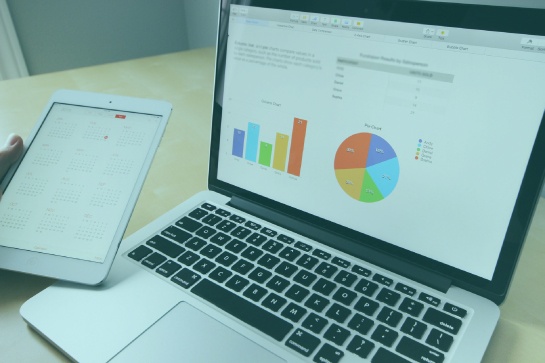Display advertising, particularly for brand advertising, is a tricky subject for data-driven marketers. On one hand, you know display is an important marketing channel and feel like it must be moving the needle somewhow, but on the other hand, it’s always a challenge to back that intuition up with solid data.

Here’s what usually happens. You have two display campaigns running simultaneously: a brand campaign and a direct response campaign. The direct response campaign gets a significant amount of clicks and, since you have an attribution solution, you’re able to see that they directly impact revenue. The brand campaign, however, gets a ton of impressions, but generates few valuable clicks. You know they must be making some impact, but since it’s less direct, it’s hard to demonstrate that impact with the data at hand. Reluctantly, you conclude that your brand campaign underperformed and you reallocate part of the brand campaign budget to the direct response budget.
But the data conundrum doesn’t just happen with brand versus direct response on display, you still have it when comparing display to other marketing channels.
Your data might show that while your display campaigns are getting a decent amount of clicks, it’s driving less revenue per dollar than your other marketing channels, such as search. Given that data, it would be tempting to reduce your display budget, but you also believe that display — both direct response and brand — has a greater marketing impact than what the clicks show.
Seeing but not clicking on a highly visual display ad must have a greater impact than seeing but not clicking on a search result, right?
Without the data to prove that display is having an impact beyond the direct clicks, it’s hard to justify investing a significant part of the marketing budget on it.
Solving The Display Advertising Data Challenge
View-through conversion tracking takes a big step forward in the effort to provide meaningful data for display advertising, especially at the brand level.
Put simply, view-through conversion tracking gives marketers the ability to measure and attribute credit when someone sees an ad, but doesn’t click on it. It’s a critical attribution feature for marketers who want to be able to put data behind their brand advertising.
View-through tracking can measure and give credit when someone sees an ad, but doesn’t click
In the past, it was assumed that view-through was only useful for B2C marketing analytics. It was mainly because B2C companies tend to invest more heavily in brand advertising, compared to B2B companies.
But that’s changing.
As more B2B organizations and marketers increasingly value and invest in brand advertising, it’s more important than ever to measure it with meaningful metrics. Because view-through was thought of as a B2C-only analytic, B2B marketers were stuck. They were only able to track their brand performance with top-of-the-funnel metrics like impressions and click-through rates.
However, when it comes to display — a key digital brand advertising channel for both B2C and B2B — we know that neither impressions or click-through-rates are very useful. Impressions are mostly just a factor of spend, and with viewability concerns still being worked out, it’s even less meaningful for data-driven marketers. And click-through rates, by themselves, have little correlation with real business value (e.g. sales opportunities and closed deals).

Fortunately, because of view-through tracking, B2B marketers are no longer limited to these loosely meaningful metrics. And we’re happy to announce that Bizible is one of the first B2B marketing measurement solutions to offer it.
How View-Through Tracking Works
With view-through tracking, every time a display ad is served, a Bizible impression pixel is fired, which registers the impression and includes a Bizible User ID (among other things) in the tag. We can then map the Bizible User ID from the impression pixel to the same Bizible User ID when they visit the website in the future.
When there is a match, we surface data that includes the specific ad, the campaign, where it was served, and the date.
However, just because someone saw a display ad in the past, doesn’t mean that it necessarily influenced the future behavior. For example, you probably have no idea what display ads you saw a year ago. And they probably don’t impact your web behavior today.
The amount of time between seeing the display ad and visiting the website is called the lookback window. If the date of the display ad impression is within the predetermined lookback window, we can re-categorize the credit to the appropriate channel: display.

Bizible’s view-through pixel is tailor made for the B2B customer journey. Because it uses a tracking cookie that doesn’t expire for an entire year (compared to the typical 30-90 day window), it’s better suited to help map out the entire B2B customer journey, which is much longer and more complex than the B2C customer journey.
When it comes to how view-through impacts the attribution model, we’re currently working with our customers to determine whether a view-through engagement deserves touchpoint credit, and how much weight it will receive. Will the full amount of credit be reassigned to the view-through channel, or will it only be a partial amount?
One Big Step Forward
We know that display is just one of many channels that could influence a subsequent touchpoint. Out of home advertising, like seeing a billboard, or word-of-mouth sharing could play a part in influencing customer behavior, as well.
One hundred percent certainty is a long ways away, but view-through for display advertising is a big step forward.
Display is a powerful channel to reach a large, yet targeted, audience with brand messaging. For B2B marketers, it’s important to have that capability in the advertising arsenal. And as more B2B marketers become more data driven, no matter the actual impact, brand advertising via display will only remain valuable when there is sufficient data available to back it up.
That’s why view-through now matters for B2B marketers.
Digital & Social Articles on Business 2 Community
(70)





